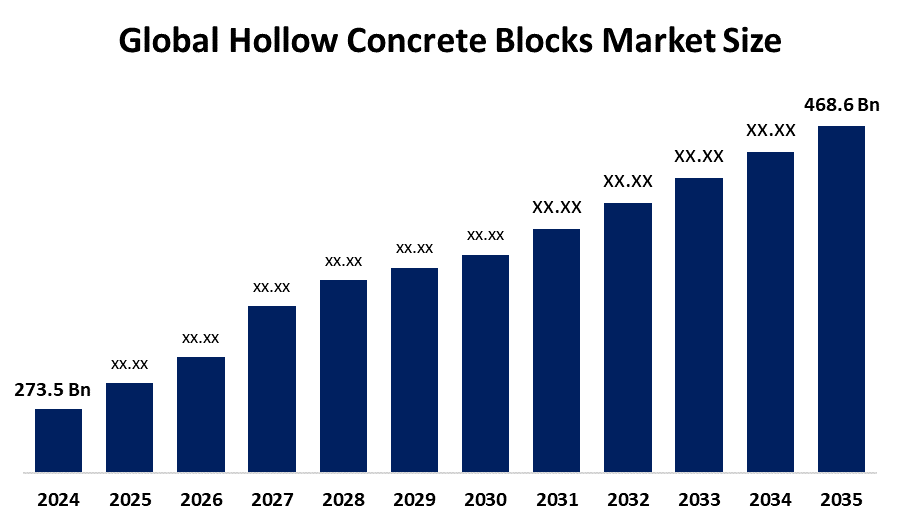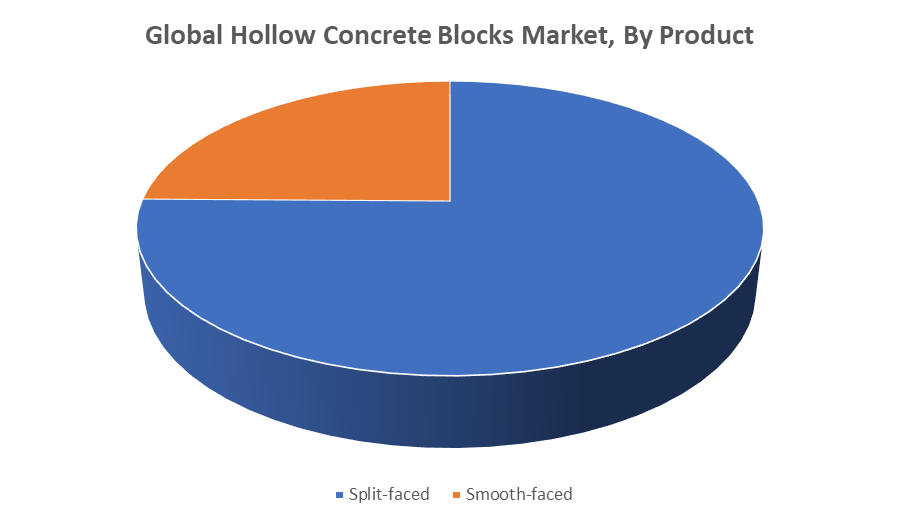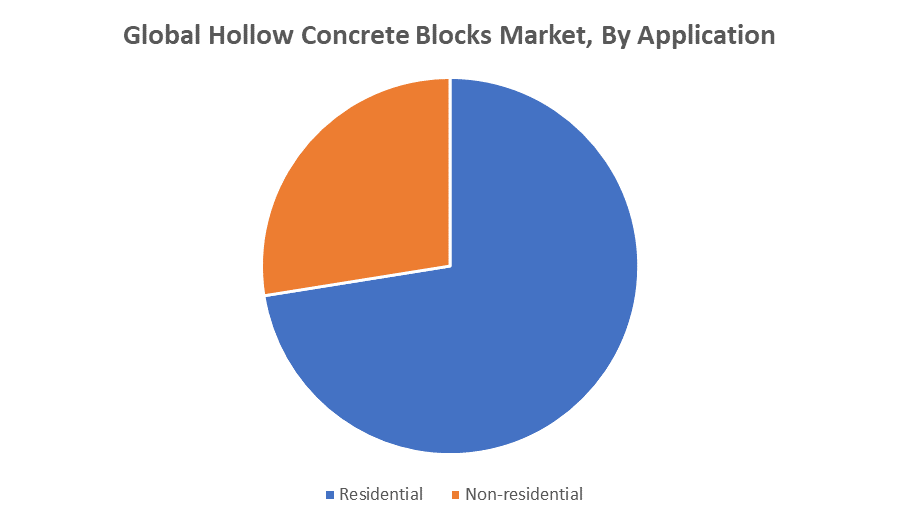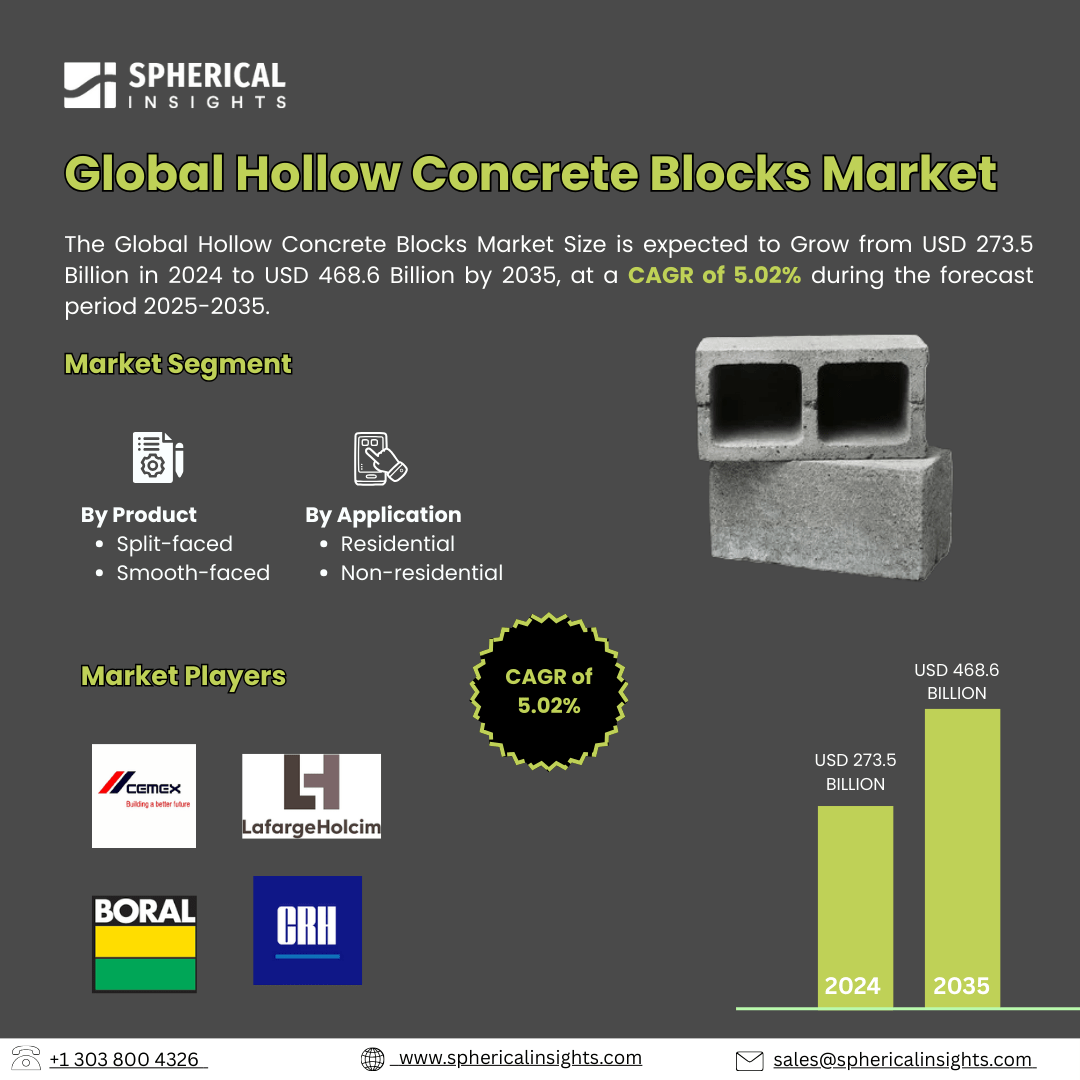Global Hollow Concrete Blocks Market Insights Forecasts to 2035
- The Global Hollow Concrete Blocks Market Size Was Estimated at USD 273.5 Billion in 2024
- The Market Size is Expected to Grow at a CAGR of around 5.02% from 2025 to 2035
- The Worldwide Hollow Concrete Blocks Market Size is Expected to Reach USD 468.6 Billion by 2035
- North America is expected to grow the fastest during the forecast period.

Hollow Concrete Blocks Market
The Global Hollow Concrete Blocks Market Size centers on the production and use of lightweight, hollow-structured concrete blocks commonly employed in construction. Hollow concrete blocks are characterized by their voids, which reduce material usage and weight while enhancing thermal insulation and soundproofing properties. These blocks provide strength and durability, making them suitable for various building applications, including walls, partitions, and foundations. Their fire resistance and ease of installation contribute to their popularity in both residential and commercial construction projects. Hollow concrete blocks also support sustainable construction practices by reducing the need for excessive raw materials and improving energy efficiency in buildings. Manufactured using cement, aggregates, and water, these blocks come in various sizes and shapes to meet different architectural requirements. As construction techniques evolve, hollow concrete blocks continue to be favored for their versatility, cost-effectiveness, and environmental benefits, establishing them as a fundamental component in modern building solutions.
Attractive Opportunities in the Hollow Concrete Blocks Market
- The rise of modular and prefabricated building methods presents a significant opportunity for hollow concrete blocks. These blocks can be efficiently integrated into off-site construction systems, enabling faster, standardized, and scalable building projects. This trend supports innovation in block design and manufacturing, allowing the market to expand into more efficient and cost-effective construction techniques.
- Increasing interest in low-carbon, sustainable building practices opens up opportunities for hollow concrete blocks made with recycled aggregates, fly ash, or other eco-friendly materials. Such innovations appeal to environmentally conscious builders and policymakers and help meet the demand for green construction solutions, particularly in emerging markets focusing on reducing carbon footprints in infrastructure development.
Global Hollow Concrete Blocks Market Dynamics
DRIVER: Increasing demand for affordable and durable construction materials
A major driver is the increasing demand for affordable and durable construction materials that offer both structural integrity and cost efficiency. Hollow concrete blocks reduce material usage due to their design, leading to lower construction costs and faster project completion times. Urbanization and the expansion of residential and commercial infrastructure also fuel demand, especially in developing economies. Additionally, there is a growing focus on sustainable and energy-efficient building practices, as hollow blocks provide excellent thermal insulation and contribute to reduced energy consumption in buildings. Government initiatives promoting affordable housing and green construction further support market growth. Technological advancements in block manufacturing and the availability of a wide range of block sizes and shapes make them adaptable to diverse construction needs. These combined factors continue to strengthen the market’s appeal across various sectors of the global construction industry.
RESTRAINT: Lack of awareness and technical knowledge about the benefits and applications
One of the primary challenges is the lack of awareness and technical knowledge about the benefits and applications of hollow blocks in some regions, especially in rural or underdeveloped areas. Traditional construction practices, which rely on solid bricks or other conventional materials, can hinder the adoption of hollow concrete blocks. Additionally, the initial cost of setting up automated manufacturing units for hollow blocks can be high, posing a barrier for small-scale manufacturers. Transportation and handling of hollow blocks also require care to prevent damage due to their lightweight, hollow structure, which can add to logistical challenges. Moreover, in areas with poor quality control or limited access to raw materials, the durability and structural performance of hollow blocks may be inconsistent. These factors can limit the market’s potential growth, especially in regions with inadequate infrastructure or construction standards.
OPPORTUNITY: Growing trend of modular and prefabricated construction
The global hollow concrete blocks market offers promising opportunities beyond the usual driving factors. One major opportunity is the growing trend of modular and prefabricated construction, where hollow blocks can be efficiently integrated into off-site building systems. This shift creates new possibilities for faster, standardized, and scalable building methods. Also, innovations in block design, such as interlocking systems and the use of eco-friendly materials like recycled aggregates or fly ash, provide chances for product differentiation and added value. Increasing interest in low-carbon and circular construction practices opens the door for sustainable hollow block options that appeal to environmentally conscious builders and policymakers. Moreover, there is substantial potential in emerging markets where urban development continues to expand, allowing the introduction of modern block-based construction techniques. Educational campaigns and training programs aimed at architects, builders, and contractors also create opportunities to boost market acceptance and sustain long-term demand.
CHALLENGES: Inconsistent quality can lead to structural issues
One major challenge is maintaining consistent product quality across different manufacturers and regions, especially where industry standards and regulations vary. Inconsistent quality can lead to structural issues, reducing confidence among engineers and contractors. Another challenge is the limited innovation in design and aesthetics, which can restrict the use of hollow blocks in projects where architectural appeal is important. Adapting hollow block production to meet specific local climate conditions and construction needs also remains difficult in some areas. Moreover, competition from alternative materials such as autoclaved aerated concrete or precast panels challenges market growth, as these materials offer similar or superior benefits in some applications. Skilled labor shortages in certain regions may further hinder proper installation and block performance. Addressing these challenges requires greater investment in research, training, and standardization to ensure reliable and efficient use of hollow concrete blocks.
Global Hollow Concrete Blocks Market Ecosystem Analysis
The global hollow concrete blocks market ecosystem includes raw material suppliers providing cement, aggregates, and sand, which manufacturers use to produce blocks with various technologies. Technology providers supply equipment to enhance production efficiency. Distributors ensure blocks reach contractors, builders, and developers across residential, commercial, and industrial sectors. Regulatory bodies enforce quality and safety standards, while research institutions drive innovation. Government infrastructure projects also influence demand. Together, these stakeholders form an interconnected network that supports the production, distribution, and application of hollow concrete blocks worldwide.
Based on the product, the split-faced hollow concrete blocks segment led the market with the largest share over the forecast period

Split-faced hollow concrete blocks segment led the global hollow concrete blocks market, holding the largest share over the forecast period. These blocks are favored for their textured surface, which offers aesthetic appeal without requiring additional finishing. Their durability and versatility make them popular in both structural and decorative applications. The growing demand for visually appealing yet cost-effective construction materials has driven the adoption of split-faced hollow concrete blocks across residential, commercial, and industrial projects worldwide.
Based on the application, the residential application segment held the largest market share during the forecast period

The residential segment held the largest market share in the global hollow concrete blocks market during the forecast period. This is due to the increasing demand for affordable, durable, and energy-efficient building materials in housing construction. Hollow concrete blocks provide excellent thermal insulation and structural strength, making them ideal for residential buildings. Additionally, rapid urbanization and population growth have boosted the need for new housing projects, further driving the use of hollow concrete blocks in residential construction worldwide.
Asia-Pacific is anticipated to hold the largest market share of the hollow concrete blocks market during the forecast period
Asia-Pacific is anticipated to hold the largest market share in the hollow concrete blocks market during the forecast period. This dominance is driven by rapid urbanization, increasing infrastructure development, and a growing population in countries like China, India, and Southeast Asia. The region’s focus on affordable housing and government initiatives supporting construction projects further boost demand. Additionally, rising awareness of energy-efficient and sustainable building materials contributes to the widespread adoption of hollow concrete blocks across residential, commercial, and industrial sectors in Asia-Pacific.
North America is expected to grow at the fastest CAGR in the hollow concrete blocks market during the forecast period
North America is expected to grow at the fastest compound annual growth rate in the hollow concrete blocks market during the forecast period. This growth is driven by increasing construction activities in both residential and commercial sectors across the region. The growing emphasis on sustainable and energy-efficient building materials encourages the adoption of hollow concrete blocks, which offer excellent insulation and durability. Government infrastructure projects and favorable policies aimed at boosting urban development further support market expansion. Additionally, technological advancements in manufacturing processes and growing awareness about the benefits of hollow concrete blocks contribute to their rising demand. The presence of well-established construction companies and increasing investments in smart city projects also play a vital role in accelerating market growth.
Recent Development
- In August 2024, FP McCann announced a GBP 90 million investment to meet rising demand, including a new factory for Autoclaved Aerated Concrete Blocks and Panels. This expansion follows strong 2024 half-year sales and regulatory changes like the Future Homes Standard. Several factory extensions and new product lines will support growth, creating 100 jobs. An additional bagging line will enhance its range of specialist mortars and grouts.
- In December 2023, Betolar launched low-carbon concrete products in the UAE in partnership with Fujairah Concrete Products (FCP). FCP, a major manufacturer producing over 25 million blocks annually, emphasizes sustainability and holds EPD certification. The initiative focuses on paving solutions using low-carbon concrete to reduce environmental impact.
Key Market Players
KEY PLAYERS IN THE HOLLOW CONCRETE BLOCKS MARKET INCLUDE
- CEMEX S.A.B. de C.V.
- LafargeHolcim Ltd.
- CRH plc
- Boral Limited
- Xella Group
- Midland Brick
- Taylor Concrete Products Inc.
- Magicrete Building Solutions Pvt. Ltd.
- UltraTech Cement Ltd.
Market Segment
This study forecasts revenue at global, regional, and country levels from 2020 to 2035. Spherical Insights has segmented the hollow concrete blocks market based on the below-mentioned segments:
Global Hollow Concrete Blocks Market, By Product
Global Hollow Concrete Blocks Market, By Application
- Residential
- Non-residential
Global Hollow Concrete Blocks Market, By Regional Analysis
- North America
- Europe
- Germany
- UK
- France
- Italy
- Spain
- Russia
- Rest of Europe
- Asia Pacific
- China
- Japan
- India
- South Korea
- Australia
- Rest of Asia Pacific
- South America
- Brazil
- Argentina
- Rest of South America
- Middle East & Africa
- UAE
- Saudi Arabia
- Qatar
- South Africa
- Rest of the Middle East & Africa






